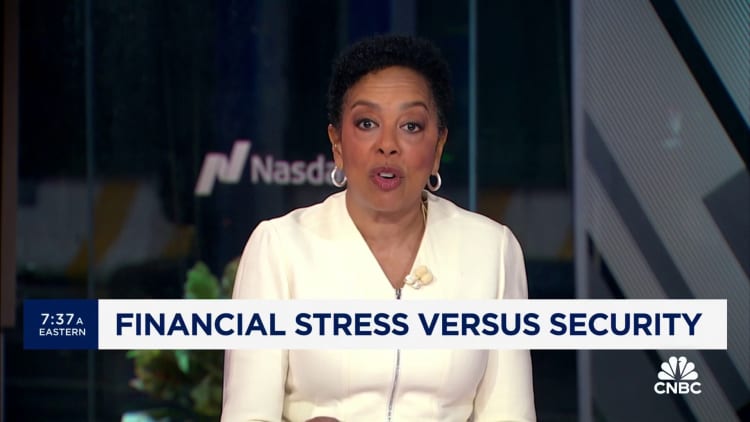[ad_1]
Riska | E+ | Getty Images
It may be a while longer before the Federal Reserve lowers interest rates, experts now say.
That means savers can still earn the best returns on their cash in years, following a “nuclear winter for the better part of the last 15 years,” said Greg McBride, chief financial analyst at Bankrate.
“We’ve now had two years in a row where both liquid savings and timed deposits like CDs [certificate of deposits] are paying yields that are well ahead of inflation,” McBride said.
The Federal Reserve has largely been expected to start a series of interest rate cuts this year after hiking rates to combat historically high inflation.
But as the economy continues to perform well and inflation is still higher than the Fed’s 2% target, predictions for how much rates will come down and when have become less certain.
“Even though rates might start dropping a bit here or there, they’re still going to be relatively high,” said Ken Tumin, senior industry analyst at Lending Tree and founder of DepositAccounts.
‘It’s a good time to lock in’
Cash savers have a variety of options in which to invest that are beating inflation, according to McBride.
“It’s a good time to lock in,” McBride said, with CDs, treasury bills and Treasury Inflation-Protected Securities, or TIPs, all paying higher rates.
Series I bonds have become a better deal, though not as many people are paying attention to them, McBride said. When I bonds were at 9.6%, they were just reimbursing savers for inflation, with no after-inflation return. Now, however, they provide an after-inflation return of 1.3% in addition to reimbursing savers for inflation, for a total of 5.27% available through April 30.
To be sure, many of the mentioned investments require savers to stay put for a specified time period, and may require some funds to be forfeited if they are cashed in early.

Online savings accounts provide higher yields
Online high yield savings accounts provide more flexible terms for accessing cash and annual percentage yields more than 4%, in many cases.
Yet 67% of Americans are earning interest rates below that threshold, according to a recent Bankrate survey.
The two top reasons respondents cited for not moving their money included wanting access to their money through their local bank branch and being comfortable with their current financial institution.
However, savers should keep in mind they don’t necessarily have to give up branch access or completely sever ties with their current bank or credit union if they set up an account that’s linked to their existing accounts, McBride said.
“You’re just going to send your savings somewhere where it’s going to be welcomed with open arms and higher yields,” McBride said.
Consider when you need the money
When choosing between locking in returns on cash or finding a better rate on a liquid savings account, the timing of your goals should be your priority.
“The fundamental determinant is, ‘When do you need the money?'” McBride said.
Ask yourself whether you need to have access to your cash at a moment’s notice or whether you can afford to lock it up for multiple years, he said.
For investors who have ample cash, it may make sense to break deposits up among online savings accounts, short-term CDs, and even long-term CDs or Treasury notes, according to Tumin.
“No one really knows where interest rates are going to fall,” Tumin said. “So you can try to kind of hedge your bets.”
However, for savers without much savings, a high yield online savings account still makes the most sense, he said. All savers — regardless of deposit size — should make sure their deposits are FDIC insured.
[ad_2]